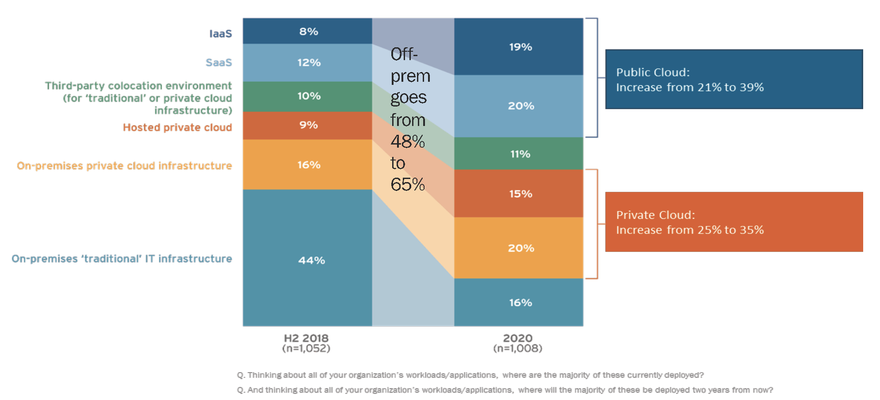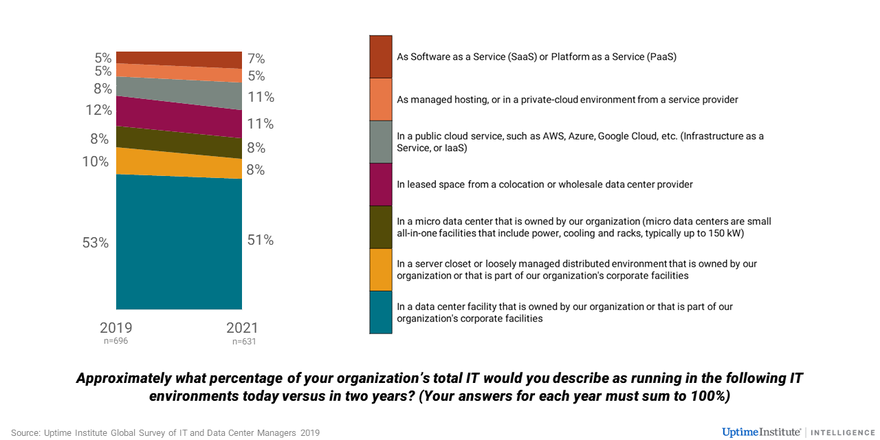There are many things swelling the public cloud, but the industry is closely watching the rate at which enterprise workloads are moving there, because enterprise IT is a proven, high-margin sector with large, reliable budgets.
The popular view is that enterprise IT is rapidly migrating, as infrastructure layers are outsourced to cheap, reliable, flexible, pay-as-you-go cloud services - like AWS, Azure and Google Cloud. Many predict a tipping point where non-public cloud or non-software as a service (SaaS) IT becomes too expensive and too difficult to support.
Some studies suggest we are nearly there, but Uptime Intelligence believes the tipping point is some years away.
This article appeared in the July issue of DCD Magazine. Subscribe for free today.
Beyond the hype
In the second half of 2018, 451 Research asked 1,000 operators where the majority of their workloads were deployed (Fig1). Sixty percent said most of their workloads were on-premises, some in private clouds. Only 20 percent said most of their workloads were in the public cloud or in SaaS. This took place when AWS had been available for 13 years, and Salesforce for 20.
The move could be stepping up: In 451 Research’s latest data, 39 percent of organizations say that by 2020, the bulk of their data will be in SaaS or a public cloud service - and nearly half (47 percent) say their workloads will still mostly be in enterprise data centers or under their control in a colocation facility. While shifting work to the cloud, many are simultaneously maintaining and even expanding premium data center and Edge facilities.
In 2019, Uptime Institute asked respondents to describe the percentages of their IT in different environments.
This study (Fig2) showed a much less dramatic shift. Over 600 operators said that, in 2021, about half of all workloads will still be in enterprise data centers, and only 18 percent of workloads in public cloud/SaaS services. Just over three-quarters of all workloads, they believe, will still be managed by their own enterprise staff at a variety of locations that include enterprise data centers, colocation venues, server closets and micro data centers.
So enterprise IT’s move to the cloud is real and strong, but it is still very premature to talk of the death of enterprise IT, and the corporate data center. It’s worth mentioning that a large part of the public cloud's growth is from consumer services, such as Netflix, Uber or Snapchat.
The tipping point may come eventually: workloads that have been converted to cloud are much more easily moved off-premises. But we think the big switch is still a few years away: enterprise IT is changing and challenging, but not in terminal decline.
Public cloud operators will have to work on issues of transparency, trust, governance and service to attract IT workloads. Outstanding tools and infrastructure are not enough.






